The Nature of
Genius
An interdisciplinary analysis of the neurobiological and evolutionary mechanisms behind the development of exceptional cognitive abilities.
Loss of the ability
to realize genius potential
Potential and Untapped Possibilities
Modern neurobiological research reveals a remarkable phenomenon: every newborn possesses a unique set of neurophysiological traits—prerequisites for exceptional cognitive development.
- 1First, the infant brain exhibits unprecedented neuroplasticity, driven by an overabundance of synaptic connections. During this period—peaking around ages 2 to 3—the density of synapses exceeds that of the adult brain by a factor of 1.5 to 2. This forms a multitude of "draft" neural circuits, which serve as the foundation for the formation of complex neural networks.
- 2Second, studies of cognitive development show that children naturally apply a methodology akin to scientific inquiry. This innate investigative approach mirrors the thinking patterns of leading scientists and inventors, making it possible to draw parallels between early childhood cognition and “genius-level” thought processes.
- 3Third, from birth, the human brain carries an evolutionarily developed potential for genius.
This unique combination of neurophysiological and cognitive factors creates the foundation for achieving what can be called the anthropological maximum in adulthood—the optimal realization of human potential.
And yet, we observe a paradox: despite these extraordinary early capabilities, most individuals reach adulthood with a standardized level of cognitive ability that falls significantly short of what is neurologically possible.
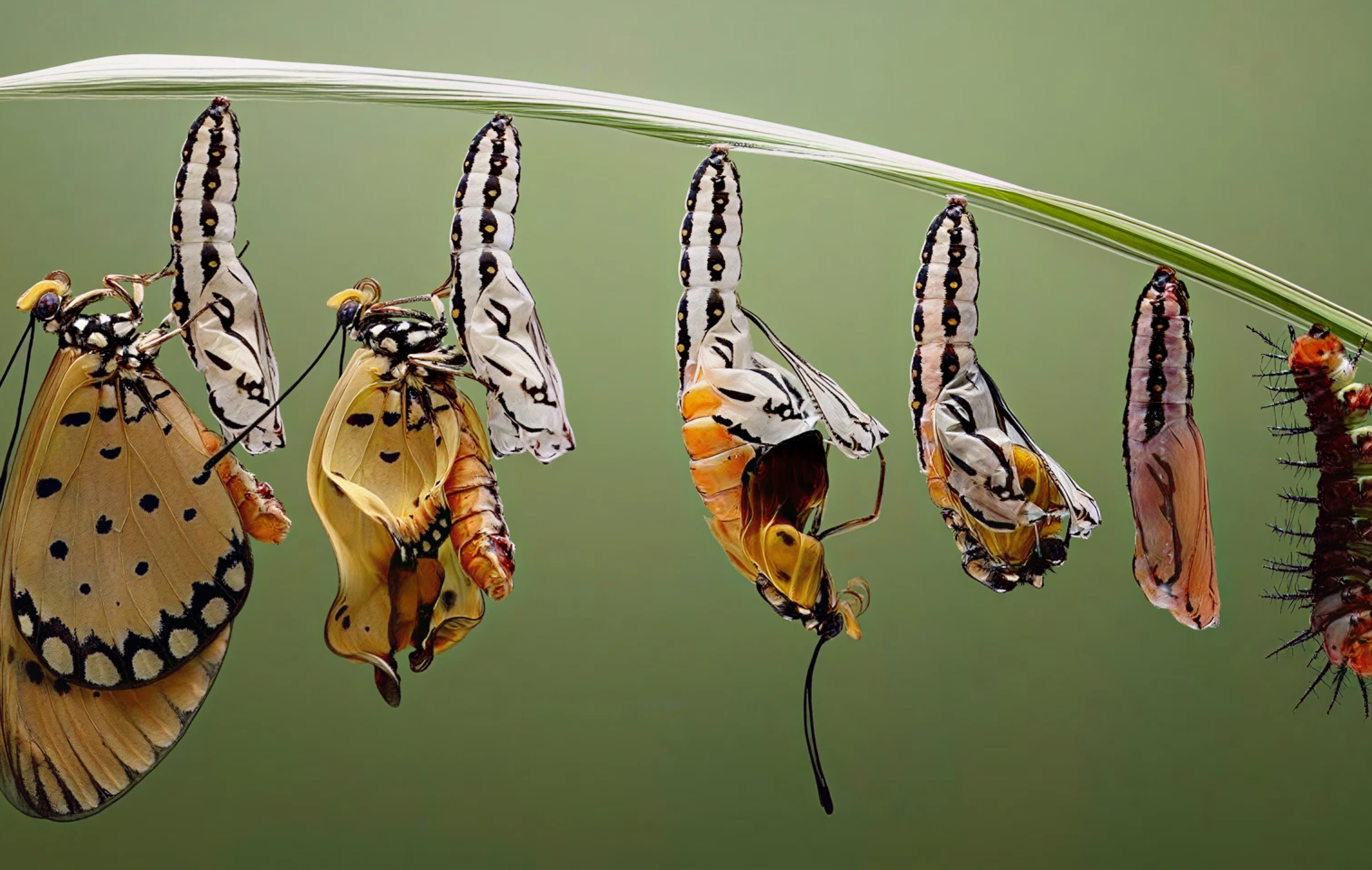
Neurobiological data show that the structural and functional differences between the infant and adult brain are so pronounced that they may be regarded as two distinct neurophenotypes within the same biological species.
This phenomenon raises a profound question: why would evolution shape a system in which the original state (the child), endowed with exceptional adaptive advantages—hyperlearning capacity, creativity, and neuroplasticity—transforms into a final state (the adult) that loses these key traits?
Some researchers in the field of neuroontogeny describe this transformation not as progressive development but as a form of devolution (from the Latin devolutio, meaning “reverse development”).
Metaphorically, this process can be likened to a reverse metamorphosis of a butterfly: whereas a caterpillar transforms into a more advanced form, humans appear to do the opposite—an organism with immense developmental potential transitions into a more constrained state.
It is as if the butterfly enters the cocoon... and never emerges again.
Evidently, significant changes occur during the maturation process that limit the potential initially present in childhood. The key factors involved are:
- 1
Synaptic Pruning (Neural Connection Trimming):
Research shows that the peak density of neural connections occurs around ages 2 to 3. After this peak, a gradual reduction begins. This process—known as synaptic pruning—is an evolutionarily programmed mechanism of optimization that eliminates excessive or rarely used neural connections, preserving only the frequently utilized and functionally essential ones.
While this enhances the brain’s operational efficiency, it also reduces its plasticity.
Synaptic pruning unfolds gradually and affects different regions of the brain at different times. The timing and intensity of pruning can vary between individuals and are influenced by numerous factors, including experience and environment:
- Early synaptic pruning (before ~age 7) primarily impacts sensory and motor regions, as well as basic cognitive functions essential for adaptation to formal education.
- During adolescence, pruning shifts toward the prefrontal cortex, where selective elimination of weak synapses reorganizes executive functions such as planning, emotional regulation, and decision-making. The prefrontal cortex continues to develop and refine itself through the mid-20s.
- Full "adulthood"—that is, the maturation of the brain, including the optimization of neural networks and the complete development of the prefrontal cortex—occurs between the ages of 25 and 30. This process is accompanied by continued myelination, particularly in the prefrontal cortex.
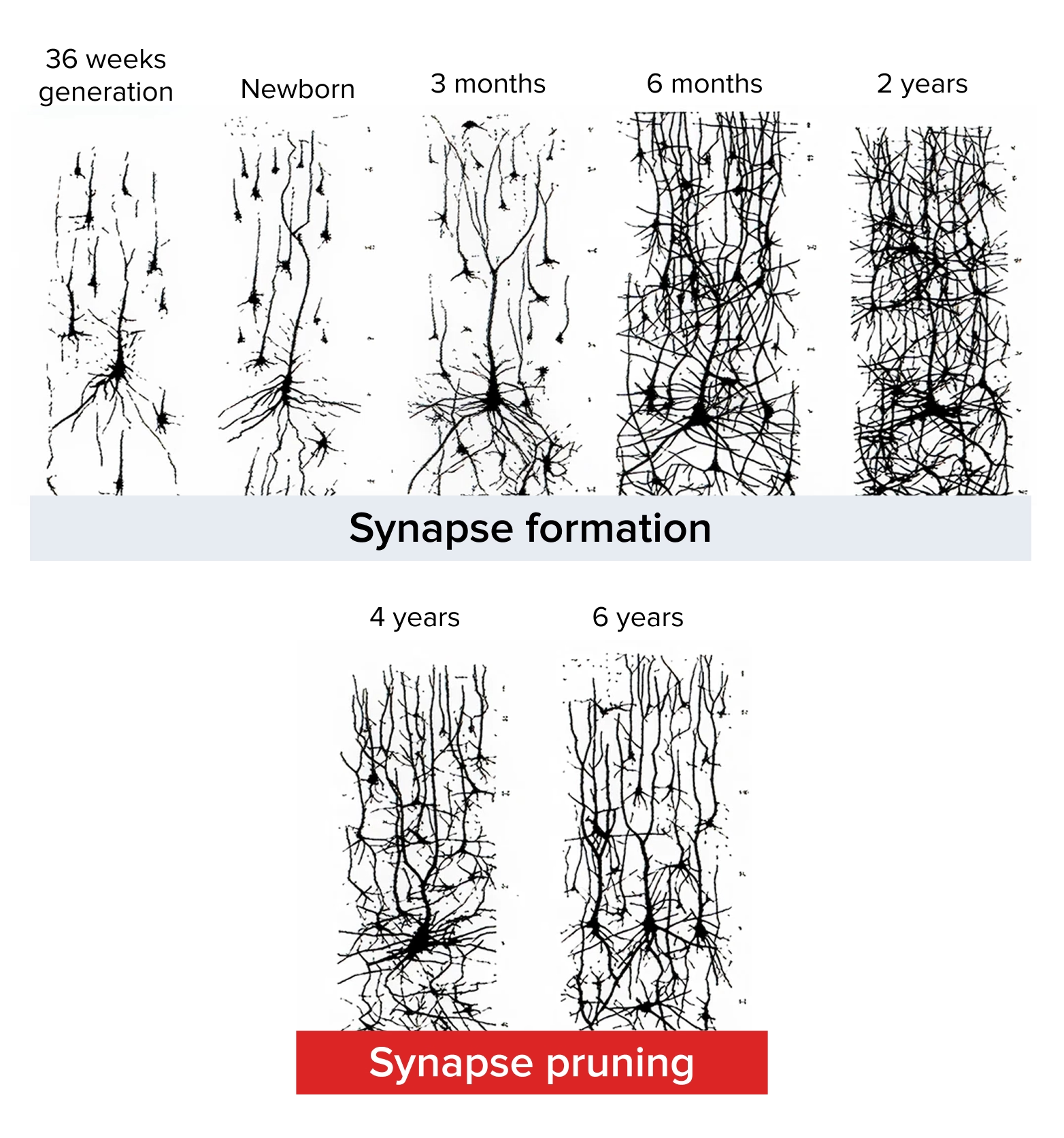
- 2
Myelination:
The process of coating axons with a myelin sheath concludes by the end of the second decade of life. This significantly increases the speed of neural signal transmission, but at the cost of reduced plasticity.
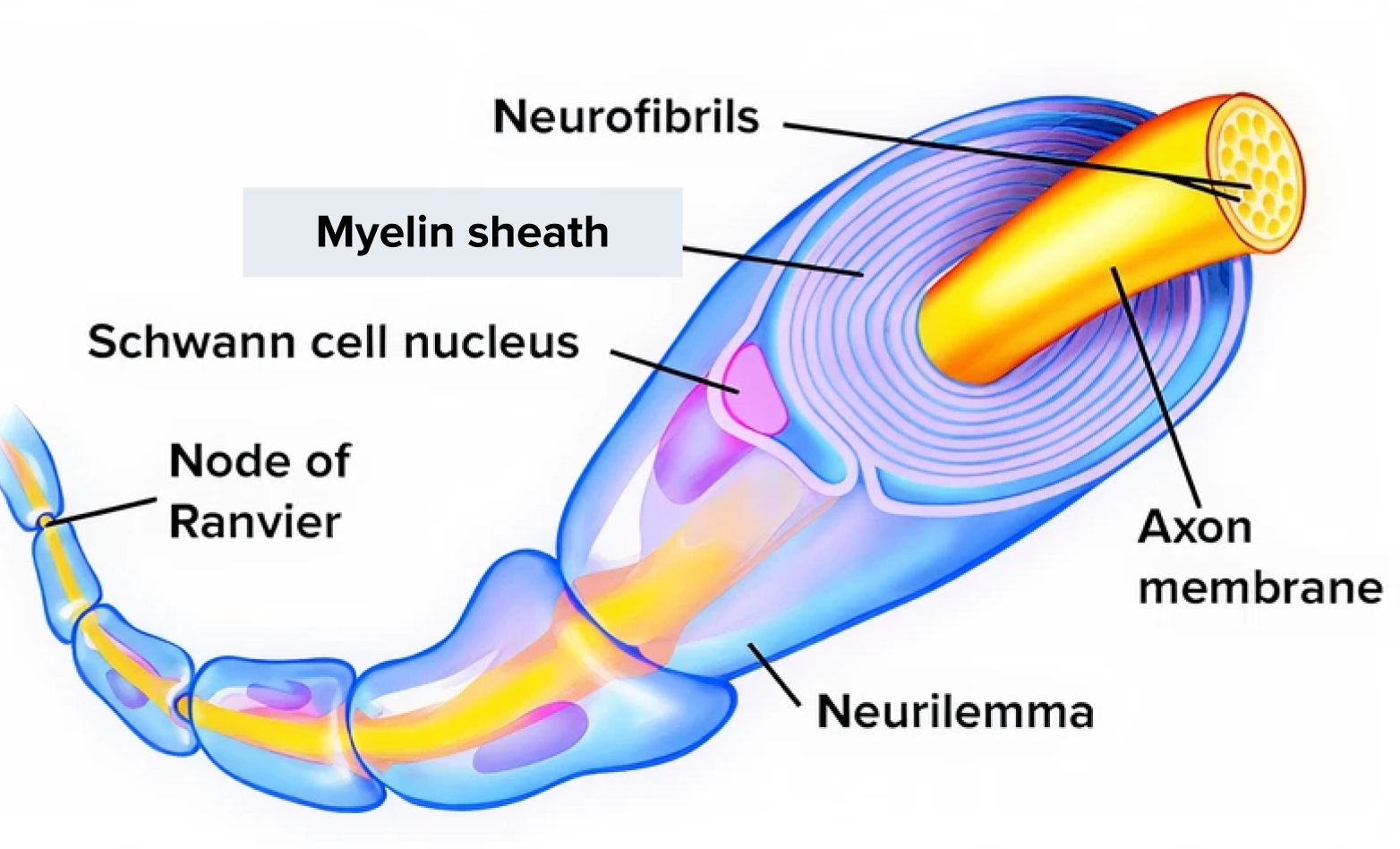
- 3
Restriction of Sensitive Periods:
Once sensitive periods have ended, the brain becomes less plastic and less responsive to new stimuli. For instance, learning languages at an older age requires more effort and time. As a result, if learning begins too late, the development of certain abilities may be hindered or never fully realized.
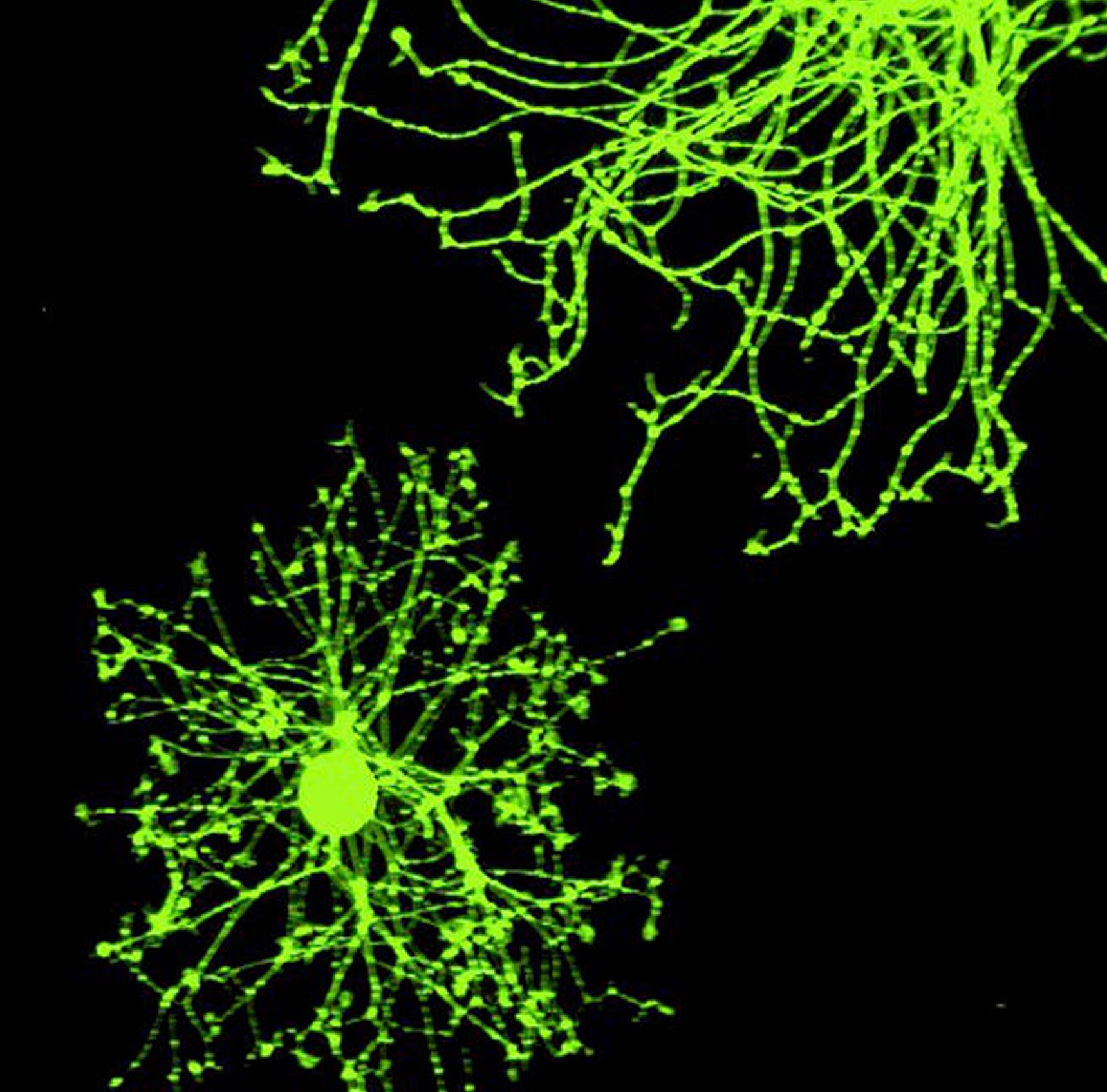
All of these processes contribute to the stabilization of neural networks in adulthood. However, they also lead to the loss of the capacity to unlock the innate potential for genius, as the high level of neuroplasticity essential for realizing that potential gradually declines.
“Social Pruning”: How Education and Culture “Optimize” the Brain
In addition to natural neurobiological processes such as synaptic pruning and neural network optimization, sociocultural factors also play a significant role in reducing cognitive plasticity.
The standardization of educational systems and adherence to cultural norms often accelerate the loss of innate creativity by limiting intellectual freedom and suppressing imagination and exploratory curiosity.
For example, modern education systems tend to emphasize formulaic solutions and correct answers, which discourages experimentation and creativity while fostering a fear of making mistakes.
Instead of cultivating divergent thinking—the ability to generate multiple ideas—these systems largely reward convergent thinking, which focuses on finding the single correct answer.
This leads to functional reorganization in the brain: the neural networks responsible for creative thinking are activated less frequently and, over time, begin to fade from use.
Cultural Norms Worsen the Process
In societies that prioritize predictability and obedience, children adapt more quickly to standardized behaviors. Studies show that in such environments, even biologically intact plasticity remains untapped—the brain becomes optimized to meet narrow social demands.
The NASA Test: 98% of Children Are Geniuses—Why Do Only 2% of Adults Remain So?
In 1968, NASA psychologists developed a test to measure creativity in children aged 4 to 5. When 1,600 children were tested, 98% demonstrated a level of creativity consistent with genius.
However, when the same children were tested again at ages 10 and 15, their creative scores dropped to 30% and 12%, respectively. When the test was later administered to 280,000 adults, only 2% scored at the genius level in creativity.

This study demonstrates that nearly all children are born with unique gifts and the potential for genius. But over time, these qualities fade—not because they disappear, but because they are overlooked and left undeveloped.
The Brain Before Age 25: Evolution’s Construction Site
Synaptic pruning (the selective elimination of neural connections), age-related declines in neuroplasticity, and the gradual fading of innate exploratory behavior—all of these factors directly influence the ability to realize the brain’s inborn potential for genius.
The temporal aspect of this process is particularly significant, defined by the convergence of two key factors. On the one hand, evolutionary mechanisms responsible for generating and refining new and promising neural connections—the future potential for genius in subsequent generations—are most active during the period of maximal neuroplasticity, which lasts until approximately age 25.
On the other hand, this same age range represents the most favorable biological and neurobiological window for unlocking the genius potential already embedded within an individual.
This convergence gives rise to a compelling paradox: the window of opportunity for actualizing innate genius overlaps with the very phase during which evolution is actively “at work,” transforming the brain’s “gray areas” into new areas of genius.
Let’s take a closer look at these processes.
The Window of Opportunity for Developing Genius: The Evolutionary Factor
Many researchers have asked a fundamental question: why did evolution “gift” humans such an unusually long period of childhood and learning? While most animals reach functional maturity relatively quickly, humans maintain high brain plasticity until around the ages of 20 to 25. Why, then, did nature allocate the entire first quarter of life to learning and development?
This unique phenomenon—known in scientific literature as the “extended neuroplastic period” or “extended childhood”—is not merely a lengthened timeframe for acquiring knowledge. Rather, it is a complex biological mechanism meticulously refined by evolution.
During this prolonged phase, the brain engages in intensive work on its “gray areas,” laying down a foundation of neural potential that can be passed on to future generations.
What accounts for the duration of this period?
As previously noted, every child is born with a unique potential for genius. However, System 1 is evolutionarily "programmed" not to unlock existing potential, but to generate new possibilities across successive generations.
For this reason, the brain tends to make dormant already-formed neural patterns—where genius may be encoded—to free up resources for creating new connections and developing promising patterns in the brain’s grey areas.
However, there is one crucial detail: human life is too short. Evolutionarily “programmed” System 1 has only a limited window of time to form promising neural connections that can be passed on to offspring. On average, the human reproductive age—the period during which individuals typically have children—is around 25 years.
It is precisely during this timeframe that System 1 “aims” to complete the formation of those neural patterns that will be transmitted to the next generation.
The first quarter of life becomes a critically important period during which evolution has the opportunity to implement its upgrades—so that a person can pass along an enhanced genetic and cognitive potential to their descendants.
At approximately the same age—around 25 years—the maturation of the prefrontal cortex is completed, accompanied by the stabilization and consolidation of neural networks.
After this point, evolution ceases its active work on developing promising neural patterns in the human brain and shifts its focus elsewhere:
- Programs geared toward survival and caregiving are activated;
- Resources are redirected toward sustaining parental instincts and the socio-cultural transmission of already established and validated skills.
With the onset of the reproductive peak (approximately ages 25–35), evolution “concludes” its work on the individual and ceases active development—even within the brain’s grey areas. From that point on, the individual continues along a path of cognitive development shaped by unconscious mechanisms. However, the primary task now becomes the nurturing and development of the next generation, where evolution’s “work” on grey areas begins all over again.
Thus, evolution operates under strict time constraints, concentrating its efforts on creating new talents and forms of genius for future generations rather than enhancing those that already exist. This helps explain why innate genius so often remains unrealized: the brain sacrifices individual genius in favor of creating the possibility for a more advanced configuration of the mind in its descendants.
“Genius is born from other geniuses—tragically, unrealized ones.”
Before the completion of synaptic pruning (around age 25) and full maturation of the prefrontal cortex, there remains a critical “window of opportunity” in which the genius already shaped by evolution can still be revealed.
This window offers a chance to realize one’s innate potential—yet the extent to which it is fulfilled depends greatly on the developmental stage at which this process occurs.
The Decline in the Ability to Realize Genius:
A Developmental Dynamic
Alongside the process of synaptic pruning, not only does the number of neural connections decrease, but the potential pathways for realizing genius also diminish. The brain gradually eliminates the “drafts” of neural networks—configurations that could have been activated if the genius-related neural patterns had been engaged.
The older the child becomes, the more connections have already been lost, and the lower the probability of fully unlocking their innate abilities.
This gradual loss of the ability to realize genius unfolds in stages. It is closely linked to age-specific periods of synaptic pruning and the maturation of neural structures. However, because the “blocking” of genius potential is inseparably tied to the unconscious mechanisms of System 1, this process has its own unique characteristics.
Three Critical Thresholds in the Loss of Genius Potential
- By age 6, approximately 20% of the potential for realizing innate genius is lost—if no deliberate development has occurred in the appropriate direction before this age.
- By ages 12–16, an additional 40% is lost.
- Between approximately 25–35 years, the remaining 40% is gradually diminished.
Why does this happen?
In addition to the gradual elimination of unused neural connections—many of which could have been instrumental in activating latent genius—an equally significant role is played by the automatic, unconscious System 1, which increasingly influences a child’s development.
Around the age of 5–6, children become more self-aware. However, at the same time, the influence of System 1 intensifies. Evolutionarily, System 1 is programmed not to activate already formed neural patterns but to foster the development of new and promising connections—new talents and forms of genius—for future generations.
As System 1 begins to dominate, the internal mechanisms that “block” access to existing genius become more active. Simultaneously, the internal resistance to unlocking one’s potential grows stronger.
After age 6, overcoming this internal barrier becomes significantly more difficult.
The second key point involves the development of System 2, which by this age becomes sufficiently mature to conduct an “audit” of the brain’s neural architecture. However, the neural patterns shaped by evolution that contain the potential for genius remain invisible to System 2 if they were not previously activated.
As a result, these patterns become inaccessible at the level of conscious thought. They are preserved in a “dormant” state under the control of the unconscious System 1—as part of an evolutionary “reserve.”
This further reinforces the “restrictive barrier” in the form of internal resistance to activities associated with the area of genius. The child begins to perceive the emotional regulation signals generated by System 1 as personal preferences: “I’m not interested in this,” “I’m bored,” “I don’t want to do this.”
Everyone Is Born a Genius—But Not Everyone Remains One
As a person ages, the “restrictive barrier” of System 1 intensifies, and with it, creativity and genius—as well as the capacity to develop them—gradually diminish.
Only rare exceptions exist: individuals whose genius emerged due to a disruption in this mechanism. Even then, it's essential to recognize that had someone like Einstein begun nurturing his genius at an earlier age, he might have made even more groundbreaking discoveries and contributed vastly more to science and human progress.
If a child’s area of genius is identified early—and active, targeted development begins as early as infancy, even around age one—there is a real possibility of preserving and fully developing the child’s innate genius potential, achieving up to 100% realization.
However, with each passing year, the number of lost opportunities increases, and many facets of that potential—left undeveloped—may be lost forever.
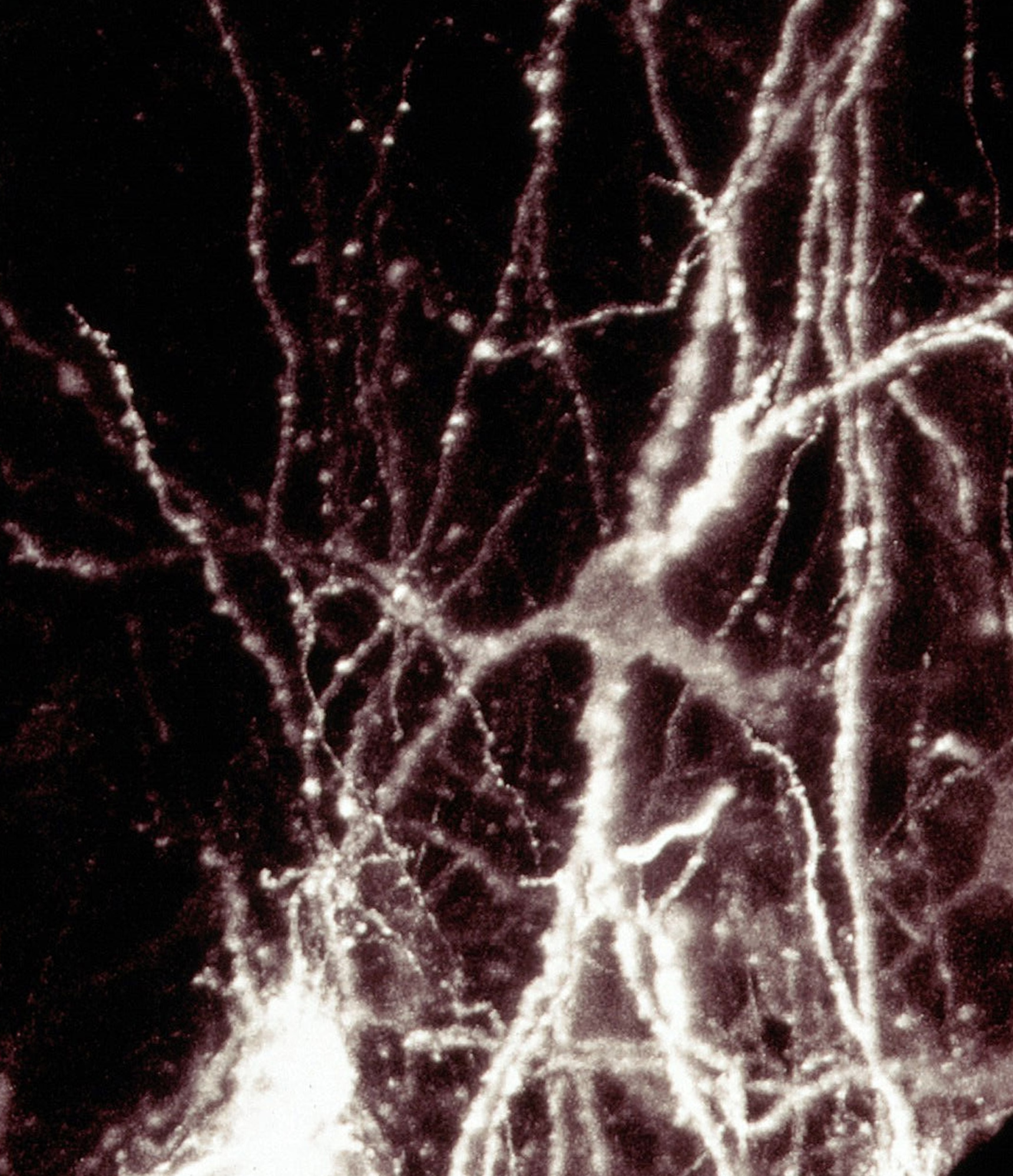
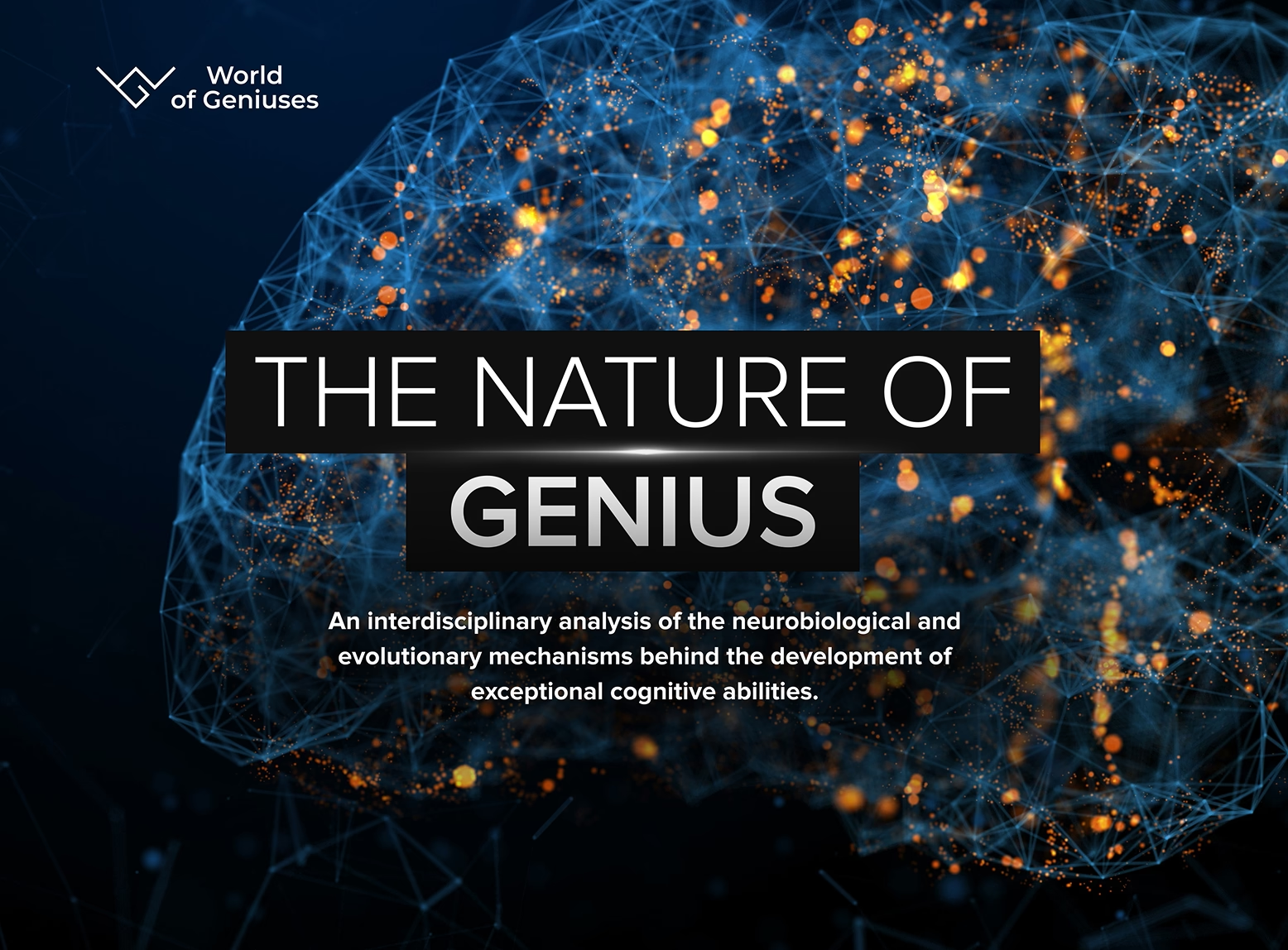
the Nature of Genius.
White Paper
An interdisciplinary analysis of the neurobiological and evolutionary mechanisms behind the development of exceptional cognitive abilities.

 Genius
Genius
